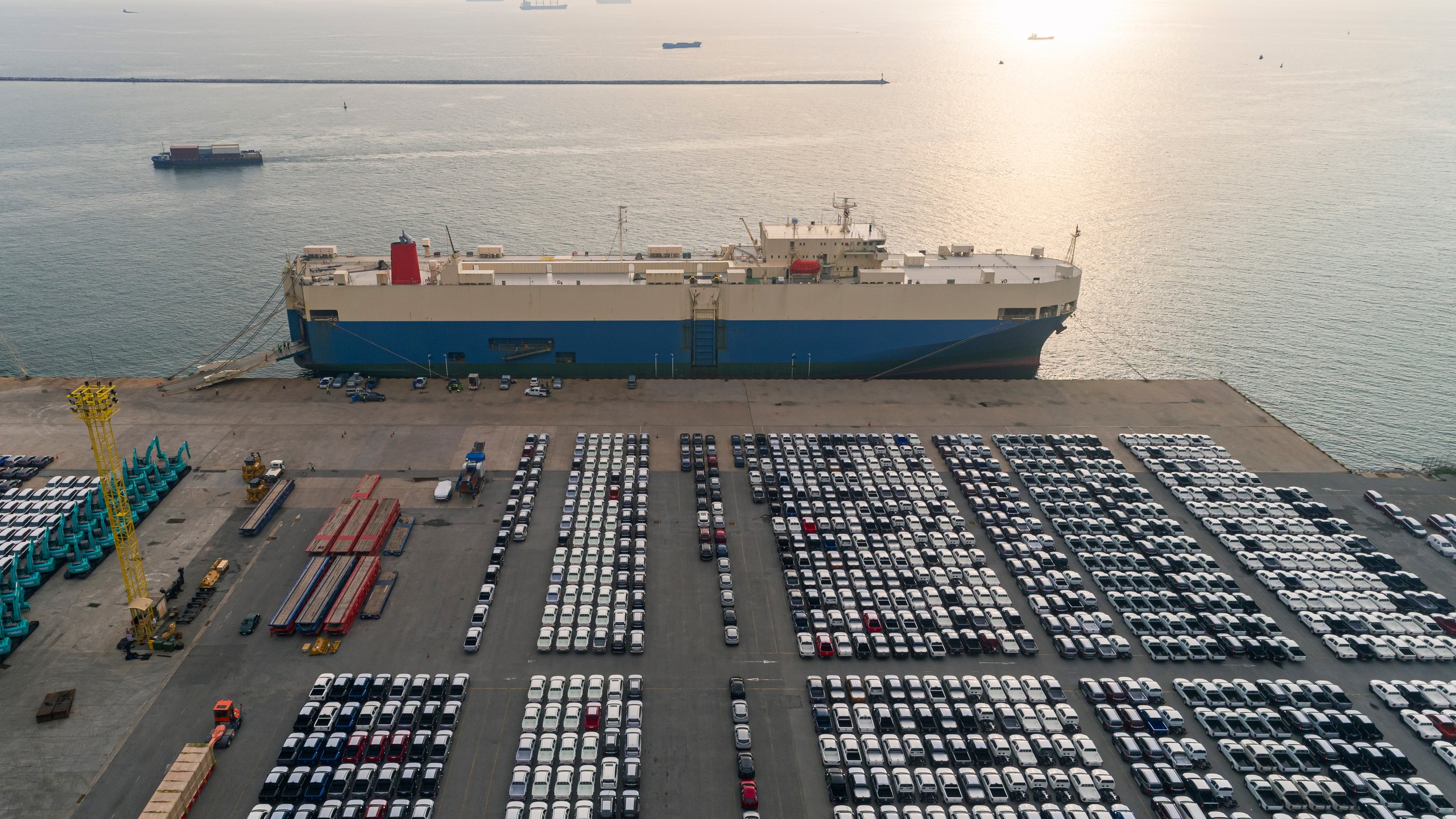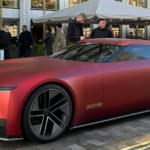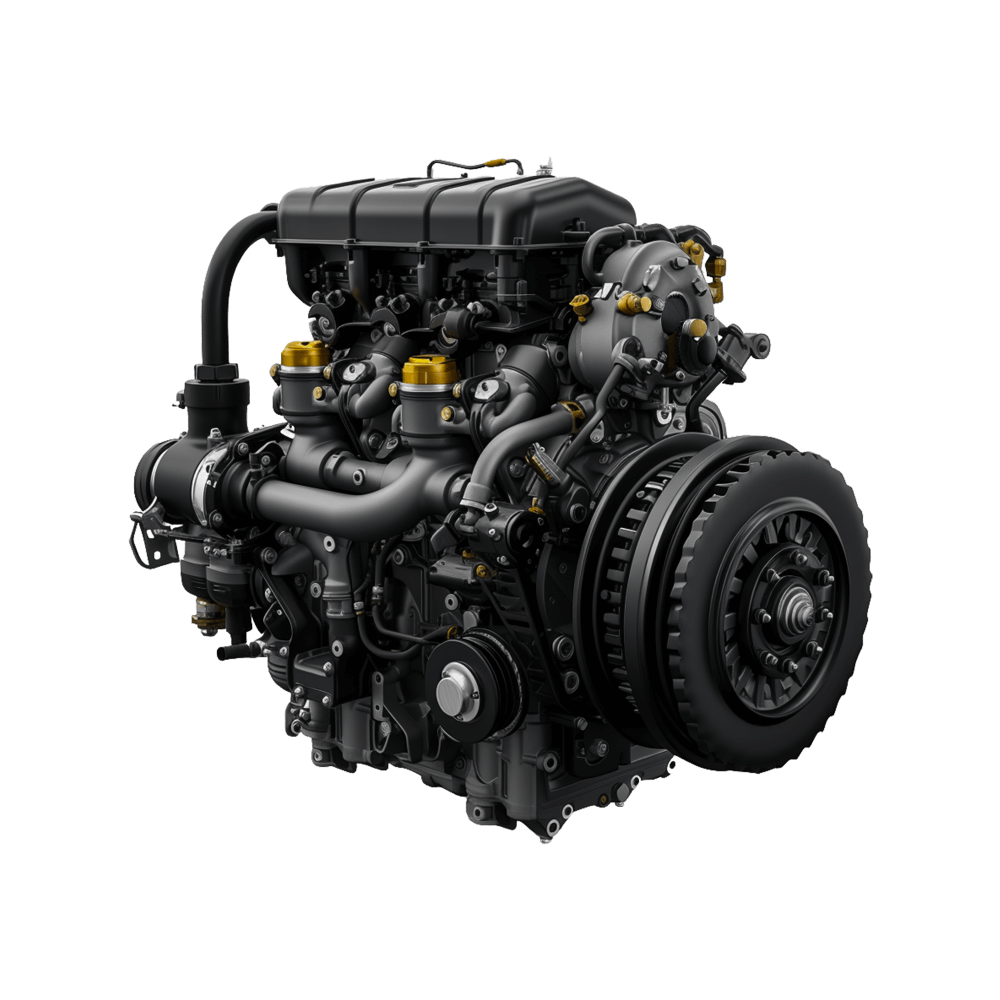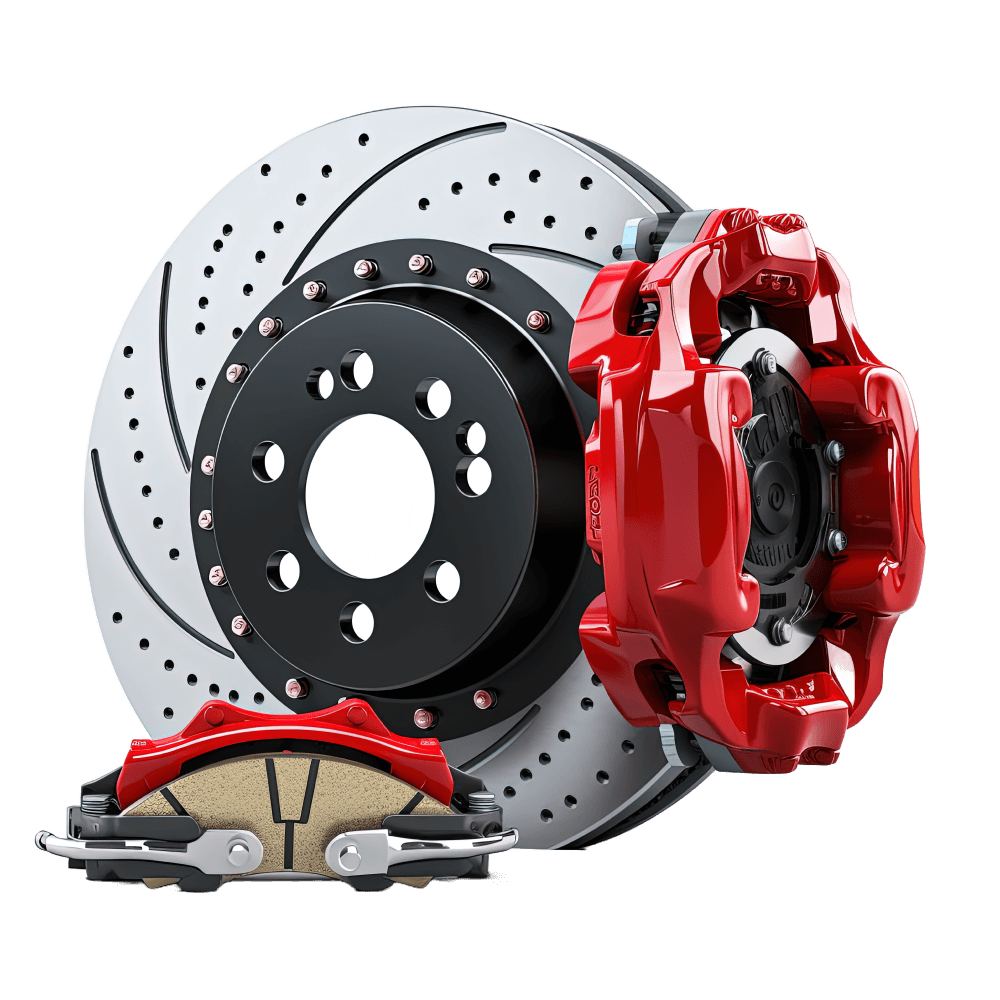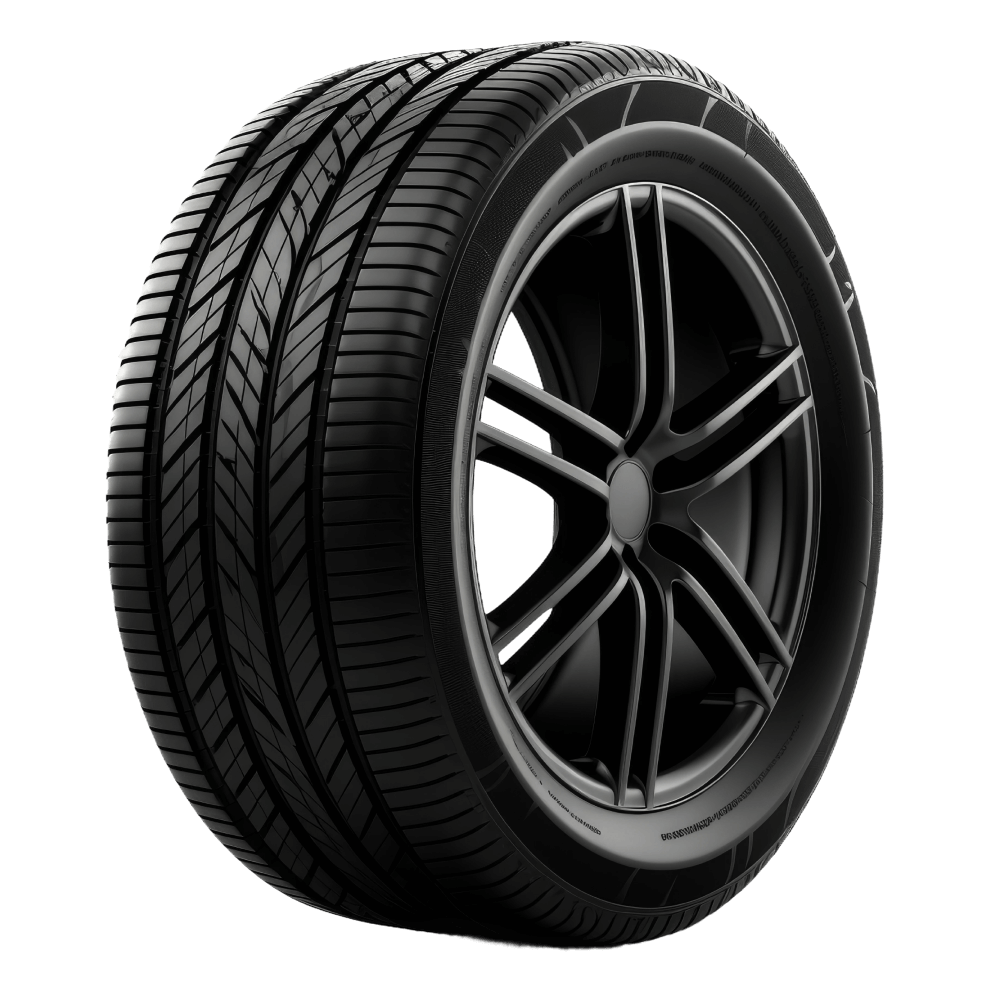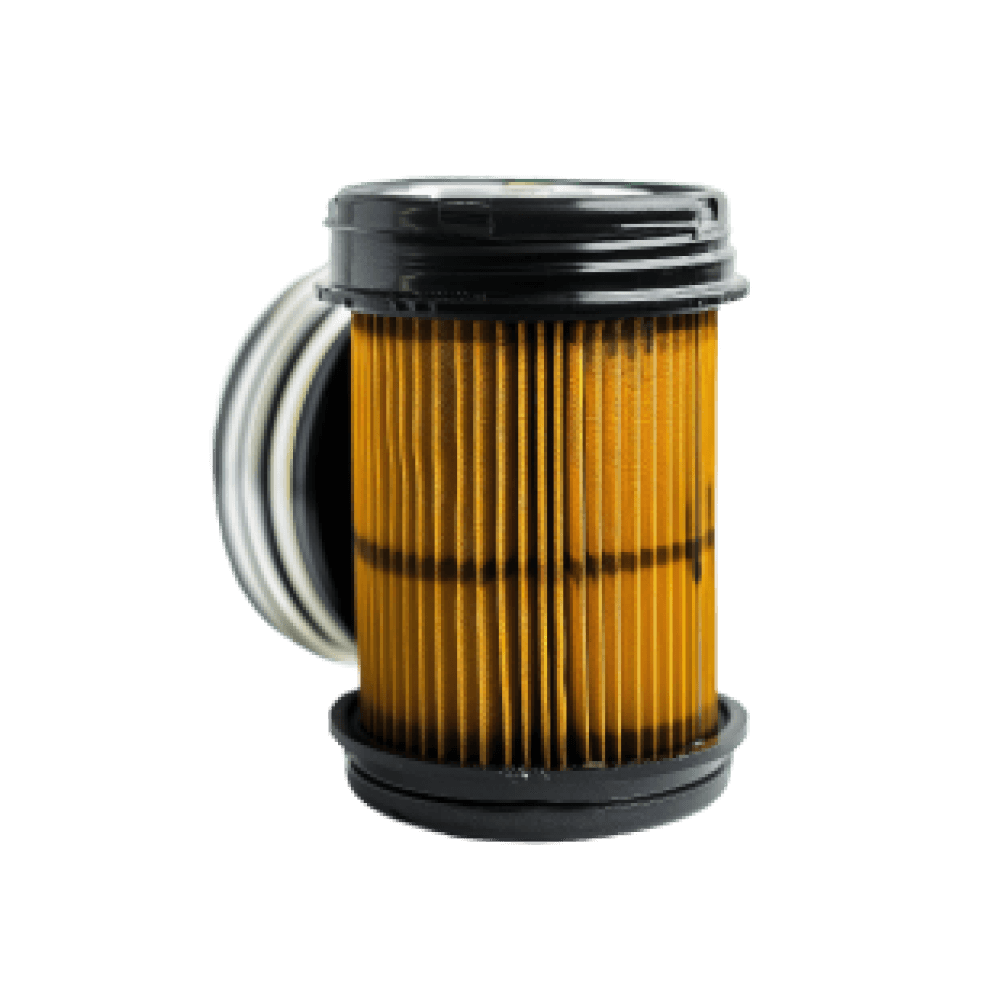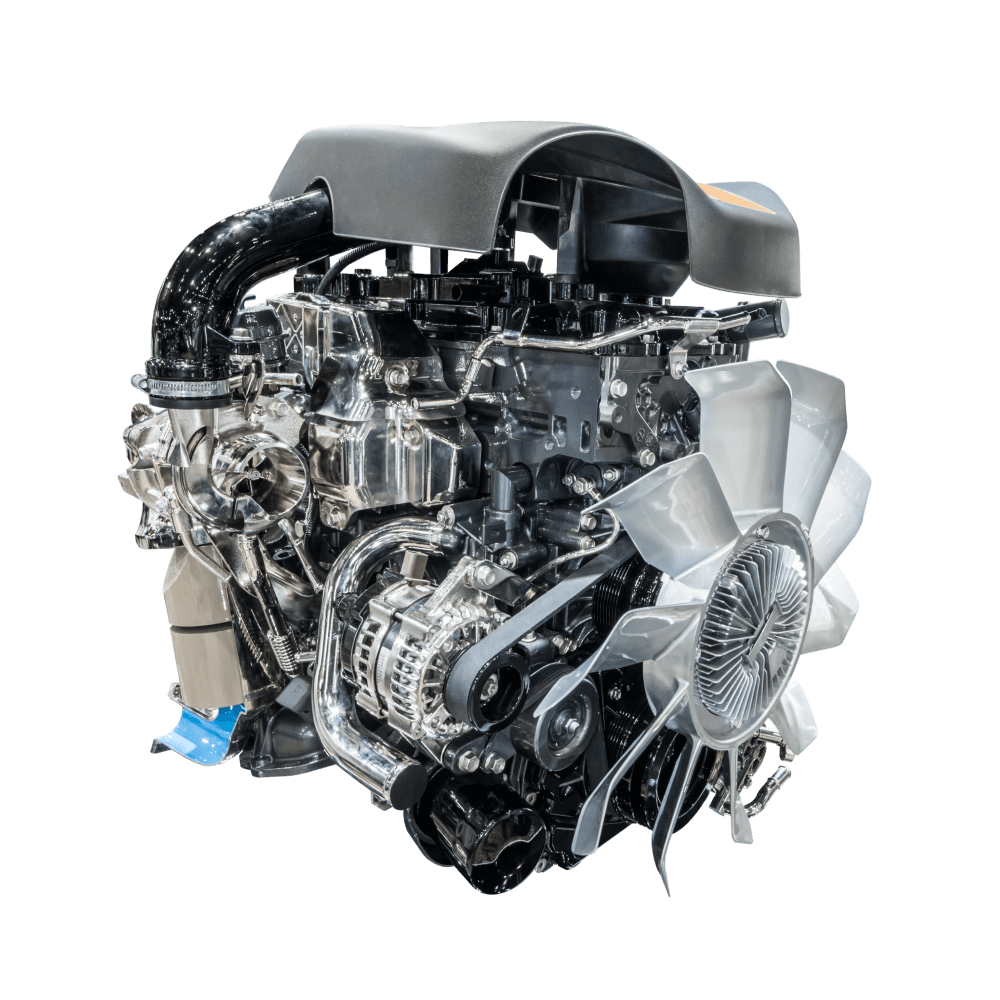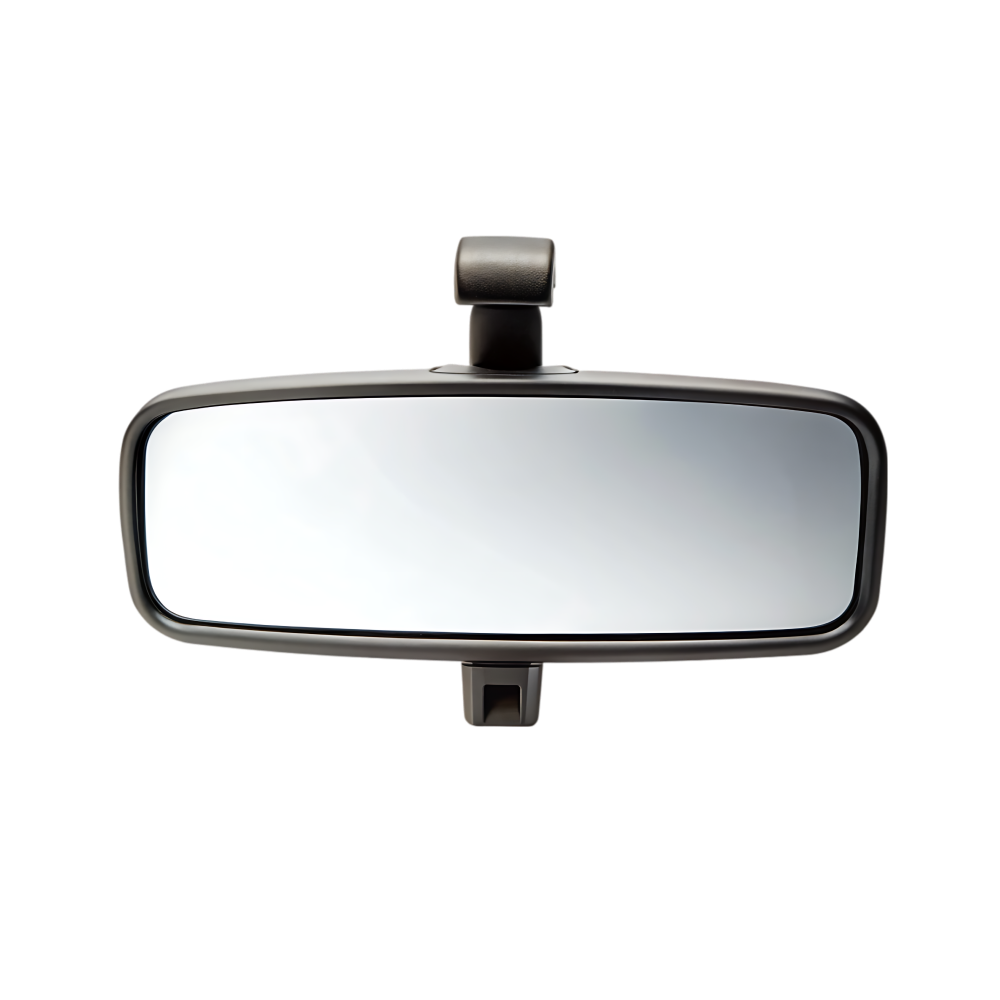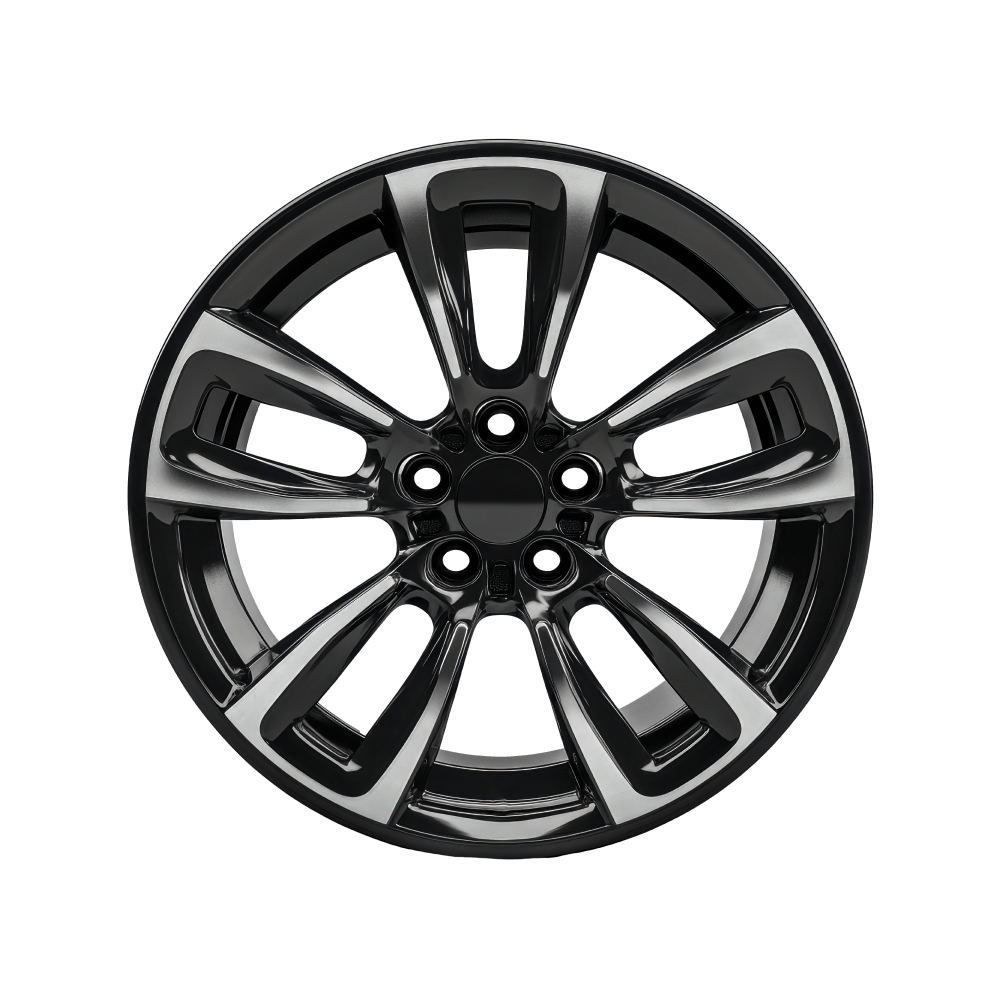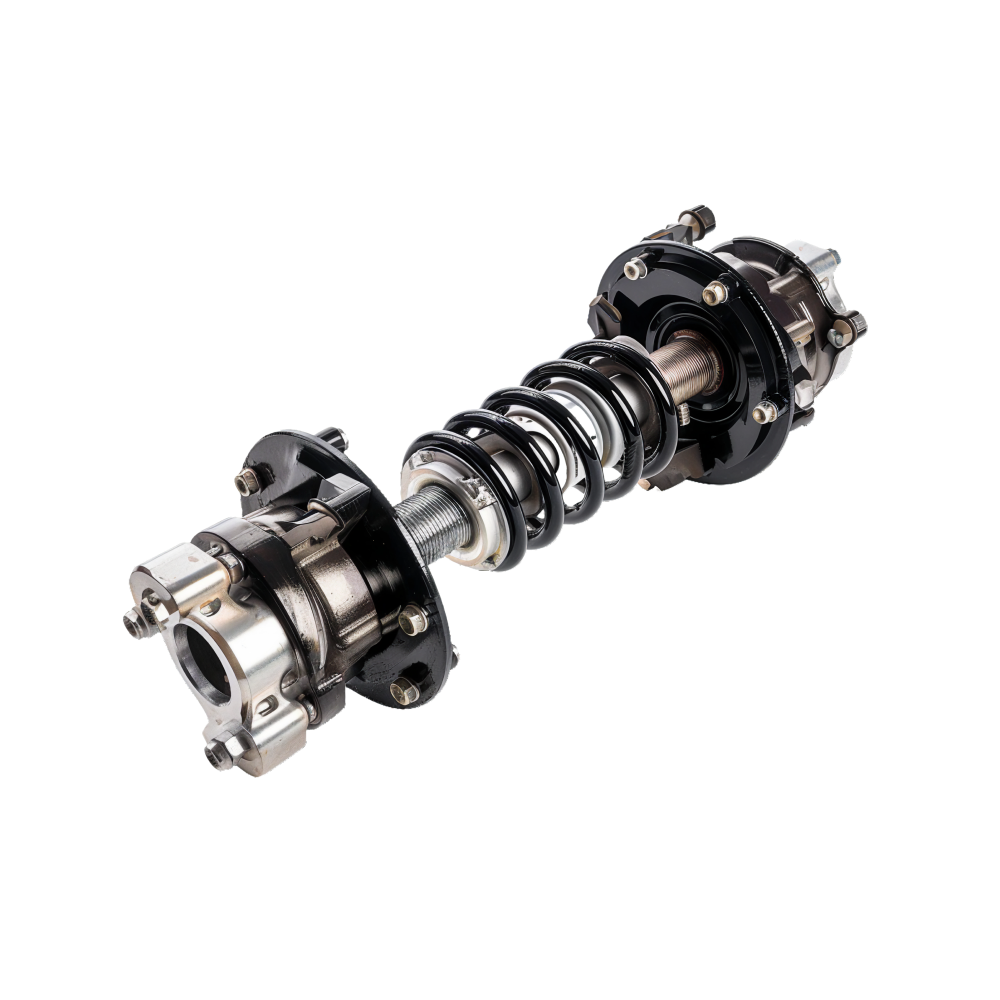News
Reviews
Buyer's Guide
Videos
What's My Car Worth?
Events
Ask MOTORTREND
Trying to keep track of all this tariff stuff? Here's how it's impacting the car industry and you.
Does the mind boggle at all these zig-zagging, on-again, off-again Trump administration tariffs on, well, the entire world? With President Trump slapping a 25 percent duty on automotive goods (including both foreign-assembled vehicles and parts), a 10 percent minimum across-the-board tariff on everything else, "reciprocal" tariffs of dubious calculation, and higher tariffs on China specifically, there is a lot of disruption going on in general and the car business in particular, which is an especially global industry with supply chains that snake across and between continents, touching both foreign and domestic automakers and suppliers, whether they build cars here or not.
Trump's tariffs on imported cars and parts, including a 25% duty, disrupt the auto industry, affecting prices and supply chains. Japan gets a tariff reprieve, unlike Mexico and Canada. Legal challenges and trade deals create uncertainty, with impacts on automaker strategies and consumer costs.
This summary was generated by AI using content from this MotorTrend article.
Our handy tracker won't answer your every question about, say, import duties on goods from penguin-inhabited islands or China, but it will cover the major developments in tariffs impacting the automotive industry. From automaker responses, Trump administration announcements, U.S.M.C.A. carve-outs for Canada and Mexico, and how all this effects you, the American car shopper, this will be your one-stop-shop for all things tariffs. The best part? This tariff tracker is free—no taxes for reading it!
July 31, 2025: While we wait for Canada’s tariff fate—which is still scheduled to get a 35 percent hit on August 1—President Donald Trump announced that imports from Mexico will remain status quo by continuing the 25 percent tariff rate for the next 90 days. The only items that won’t receive that tariff are still item categories that have been previously agreed to like auto parts and vehicles.
This reprieve came nearly down to the wire considering that a timeline set by the President was the same as Canada, but Trump is looking for a longer-term deal, saying on his Truth Social platform: “The complexities of a Deal with Mexico are somewhat different than other Nations because of both the problems, and assets, of the Border. We have agreed to extend, for a 90 Day period, the exact same Deal as we had for the last short period of time. We will be talking to Mexico over the next 90 Days with the goal of signing a Trade Deal somewhere within the 90 Day period of time, or longer.” This also prevents reciprocal tariffs enacted by Mexico as its President, Claudia Sheinbaum, has threatened to do if the U.S. were to raise it tariffs anymore.
While Canada awaits its final tariff decision and the 12:01 am ET August 1 deadline, Brazil was hit with an unexpected 40 percent tariff on goods on July 30. The explanation on this raise? Brazil charging its former President, Jair Bolsonaro, with crimes related to its election in 2022, among other issues. President Trump has also sent additional threatening letters to other countries on raising tariffs by 40 percent with no indication for exclusions on certain goods.
July 23, 2025: It's been a while since our last check-in with the whole tariff saga, but after a prolonged period of relative stability—and persistently high tariffs on pretty much every country globally—the Trump administration has reached a trade deal with one: Japan. The result? U.S. tariffs on Japanese cars has fallen to a mere 15 percent (still high, historically speaking). This is good news for Japanese automakers that import vehicles to the U.S., but it's understandably a hard deal for American automakers to accept. After all, GM, Ford, and Stellantis are homegrown car companies that are still subject to up to 25 percent tariffs on vehicles they import from other North American markets—Canada and Mexico, once tariff-free trade routes embraced long ago in compliance with NAFTA and, later, the USMCA trade agreement Trump negotiated during his first term. Those automakers are now at, essentially, a disadvantage (at least, their imported vehicles, most of which come from Mexico and Canada, are) relative to vehicles Honda, Acura, Toyota, Lexus, Nissan, Infiniti, Subaru, and Mitsubishi import from Japan. (Just as many American vehicles are produced in America, most Japanese automakers have longstanding manufacturing presences here, too—especially Honda, Toyota, and Nissan—and produce several popular models stateside.) An industry group representing the Big Three American automakers are now lobbying the Trump administration to match the 15-percent tariff with Mexico and Canada to even the playing field.
May 29, 2025: Yesterday a panel of judges on a federal trade court—yes, those exist—has ruled that most (not all) of President Trump's tariffs on imports are illegal. Before anyone breathes a sigh of relief that pricing turmoil on cars, vehicle components, and raw materials could be drawing to a close, remember two things: There is an appeals process, and judges reviewing the U.S. Court of International Trade's ruling have issued a stay on the trade panel's injunction ordering the administration to wind down the specified tariffs within 10 days; also, the tariffs deemed illegal don't seem to include those on cars, certain raw materials, or computer chips. So, the status quo remains in place while the challenge plays out.
Which tariffs are affected by all this judicial stuff? For the most part, those "reciprocal" tariffs and other punitive measures Trump has slammed onto China, European nations, and, well, most of the world. The trade judges ruled that Trump lacks the authority to initiate those tariffs unilaterally based on the International Emergency Economic Powers Act of 1977 he invoked in their use claiming trade deficits with other nations constitute an "economic emergency." Except that statute makes no mention of tariffs at all. The trade judges' ruling was in response to filings from numerous states, businesses, and others claiming harm from the tariffs' rollicking effects.
Even if the ruling stands, and the broad-based tariffs Trump has applied using the 1977 law are rescinded, it's worth stressing that tariffs invoking other statutory authorities can continue. And, as mentioned, those include levies on cars, steel, and semiconductors—meaning the automotive industry won't see meaningful relief as a result.
May 28, 2025: Volkswagen will hold the line on prices for another month, through the end of June, calling it a bid to "protect pricing for consumers." This means customers can expect Volkswagen to "cover today's increased costs" resulting from more expensive materials and components subject to tariffs themselves. Per VW, this pricing hold applies to the ID4 electric SUV, Atlas and Atlas Cross Sport SUVs, which are built in Chattanooga, Tennessee, as well as the 2025 Jetta, Taos, Golf GTI, Golf R, Tiguan, and ID Buzz electric van.
May 12, 2025: Honda announced it is moving production of its incredibly popular CR-V compact SUV from Canada to the U.S., in a major win for President Trump's tariff push. The Japanese automaker also paused an $11 billion investment in expanding EV production capacity in Ontario.
May 9, 2025: In announcing a tentative trade agreement with the U.K. on May 8, President Trump tossed in a curveball for America's automakers, who are struggling under 25-percent tariffs on vehicles and parts even they import to the country: Britain's automakers will only face the same 10-percent across-the-board tariffs applied to most goods from almost every nation globally. Per Reuters, the 10-percent levy is not only markedly lower than what American automakers will pay, but it's good for up to 100,000 vehicles—if more than that are imported from Britain, they'll be subject to higher tariffs.
Thing is, that's about how many cars the U.K. sends stateside every year, so in effect, Britain's automakers are getting a better deal on mostly expensive vehicles that have little to no U.S. parts content than American automakers and others who are compliant with the current U.S.M.C.A. trade agreement with Mexico and Canada and import vehicles with nearly half U.S. parts content. Needless to say, the American automakers aren't happy that customers will need to pay more for everyday products such as the Ford Bronco Sport or Maverick pickup, but someone buying, say, a Rolls-Royce gets dinged less (percentage-wise) at the register.
May 7, 2025: Unsurprisingly, Ford has announced that it is raising prices on three vehicles imported from Mexico: The Bronco Sport compact SUV, the Maverick small pickup, and the Mustang Mach-E electric SUV. The price hikes don't amount to 25 percent, or the impact of the tariffs these vehicles are subject to, but they're still price hikes nevertheless. Read more about this story here.
May 7, 2025: According to Reuters, Volvo plans to cut five percent of the workforce at its Charleston, South Carolina, assembly plant, citing business outlook and Trump's tariffs as reasons for the pullback. The moves would affect 125 workers.
May 1, 2025: General Motors has already increased full-size truck production at one of its U.S. plants and there are more production shifts to come as the automaker works to mitigate the cost of tariffs on imported vehicles and parts. Read more about this story here.
April 9, 2025: President Trump abruptly backed down from most tariffs announced less than a week prior, announcing a 90-day pause and, in the meantime, a blanket 10-percent tariff on most foreign countries. Trump did not pause or address the 25-percent tariff on all imported vehicles and vehicle parts, which remains in place.
China was not included in the tariff pause, and in fact, Trump increased the tariff on that country to 125 percent in retaliation to China’s retaliatory tariffs against the U.S. A large amount of parts for new and used vehicles come from China, which could further increase the cost of manufacturing new vehicles and repairing older models.
Canada and Mexico are not subject to the new blanket 10 percent tariff, the White House has clarified. Each country remains subject to individual tariffs on specific goods and industries, such as the auto tariffs, but has exemptions for certain goods (including some U.S.-sourced car parts in Mexican- and Canadian-built vehicles) covered by the U.S.M.C.A. trade deal negotiated in Trump's first term. As a result, these tariffs are still expected to increase the prices of vehicles and parts built in Mexico and Canada.
Independent reporting also suggests U.S. Customs and Border Protection is enforcing the 25-percent imported vehicle tariff against used vehicles as well as new. This means car enthusiasts hoping to import a vehicle more than 25 years old exempted from crash protection and emissions laws may also face a 25-percent tariff.
April 7, 2025: Jaguar Land Rover (JLR) has stopped shipments to the U.S. for one month as it figures out how to respond to President Trump’s 25-percent tariff on imported vehicles. “The USA is an important market for JLR’s luxury brands. As we work to address the new trading terms with our business partners, we are enacting our short-term actions including a shipment pause in April,” it said in a statement. Read more here >>
April 4, 2025: It took one day for Stellantis to join Ford in offering discounts on new vehicles as the auto industry grapples with the impact of President Trump's tariffs and ensuing trade wars, both of which are poised to have a devastating effect.
The one silver lining in a trade war expected to hike car prices, is an opportunity for consumers to get a few deals before prices are expected to rise, and an opportunity for automakers to get inventories of some overstocked vehicles back in line. If this sounds counterintuitive—that tariffs are being catastrophized as raising new car, truck, and SUV prices, but automakers are responding by effectively lowering prices—bear with us. Read more here >>
April 3, 2025: Industry experts, economists, and automakers seem in alignment on President Trump's newest tariffs: They will increase the prices customers pay for new cars and car parts, and—as a helpful knock-off effect—even on used vehicles, which will start to look more attractive as alternatives to ever-pricier new vehicles. So color pretty much everyone surprised when, the day after the latest tariffs went into effect, Ford rolled out a splashy marketing push declaring it's opening discounted employee pricing up to all customers, regardless of whether or not they know a Ford employee, retiree, or anyone else with anything to do with the Ford Motor Company. Ford's catchphrase for this effort is clever, too, with its website blaring "EMPLOYEE PRICING—Ford Motor Company. From America. For America." That's followed up by "You Pay What We Pay." Read more here >>
April 2, 2025: As President Trump lays out his latest tariffs, which he says will apply to seemingly everyone, everywhere, no matter what, you can bet your bottom trade surplus or deficit that they're going to have an effect on the car industry. That is not in question—he's singled out foreign-made vehicles and components with a 25 percent tariff, and in conjunction with a 10-percent-minimum tariff on every other country on all goods this means prices on new vehicles will rise. But prices on American-made vehicles could possibly rise less than those on imports… Read more here >>
One third of all light-duty vehicle production in North America—about 20,000 units a day—could be lost as soon as this week because of the new tariffs the Trump Administration has imposed on imports from Canada, Mexico, and China—and that means all vehicles will cost more money. At least, should the tariffs go into full effect. On March 5, just one day after the tariffs on goods from Mexico and Canada went into effect, the Trump administration declared a 30-day pause on tariffs relating to the auto industry, heeding intense lobbying by Detroit's Big Three automakers (and others). Read more here >>
March 26, 2025: President Trump today announced a 25-percent tariff on all cars and trucks imported to the U.S. as well as all imported auto parts and components. The tariffs are expected to increase the cost of an imported car, truck, SUV by up to $6,000, according to Cox Automotive. Read more here >>
Join Newsletter
Subscribe to our newsletters to get the latest in car news and have editor curated stories sent directly to your inbox.
Explore Offerings
A Part of Hearst Digital Media
©2025 Hearst Autos, Inc. All Rights Reserved.
Report Issue
Cookie Choices
Follow us
Load More

